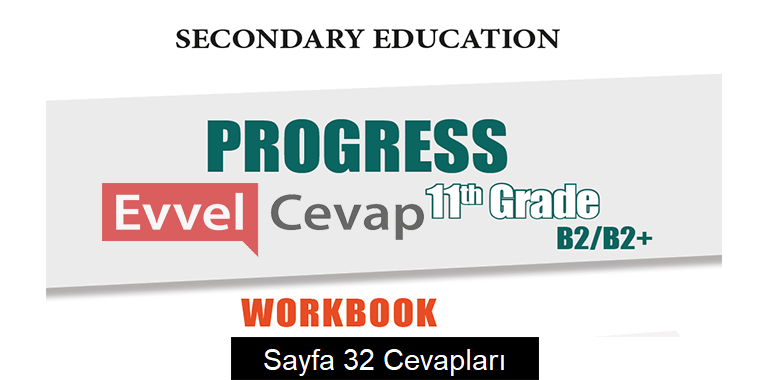11. Sınıf İngilizce Hazırlık Çalışma Kitabı Sayfa 32 Cevapları Meb Yayınları‘na ulaşabilmek ve dersinizi kolayca yapabilmek için aşağıdaki yayınımızı mutlaka inceleyiniz.
11. Sınıf İngilizce Hazırlık Çalışma Kitabı Cevapları Sayfa 32
YOU MAKE US LAUGH
Turkish people are mostly known as friendly, helpful, warm-hearted, tolerant, sociable and entertaining people around the vvorld; they, on the other hand, also do not like to be made tun of themselves. Turkish sense of humour, therefore, has been attributed to some influential figures who make laugh, teli jokes and fıkra defined as funny story including a message. There are two characters named Temel and Dursun who are from the East Black Sea Region. They speak a local dialect, but the funny stories told for centuries under the names of Temel and Dursun in this dialect fundamentally have been figured out by all Turks. These two characters in fıkras generally symbolise the main characters of the Turkish ridiculed, and their witty and satirical reactions to the comic situations. Another prominent figure of Turkish sense of humour through his legendary wit and wise jokes is Nasreddin Hodja, a popular scholar, famously considered the protagonist of comical tales with emotional content and informative message. Born in 1208 in the district of Hortu, in Sivrihisar, he was a well-educated man and had the ability to teach people valuable life lessons on being less judgmental and more thoughtful. While conveying messages to people in a satirical manner, he preferred using love, praise, and gentle mockery words instead of harsh words. A significant component in Nasreddin Hodja stories is the donkey that gives a reflection of the feelings of the people. It is unlikely to imagine Nasreddin Hodja without his donkey, which is itself an instrument of satire. Not only is he known in Turkey, but also in many parts of the world, he is known very well and his anecdotes are being translated into numerous languages. Even though much more popular in the Ottoman Empire, but now, mostly during the month of the Ramadan performed every night as shadow theatre at some public places, Karagoz and Hacivad play a paramount role in Turkish humour. The images of the coloured and semi-transparent puppets are reflected onto a white curtain with the help of light from a lamp behind the stage. Karagoz represents the ordinary man in the street forthright and trustworthy. He is virtually illiterate, usually unemployed, and embarks on money earning ventures which never work. He frequently tends to beat Hacivad and other characters in the play with his deceitful behaviours and rude talk.
Read the text and answer the following questions.
Why has Turkish sense of humour been attributed to some figures?
What do Temel and Dursun symbolise in Turkish culture?
What is the main feature of Hodja’s stories?
What does Hodja’s donkey mean in his stories?
How is Karagoz and Hacivad play performed?
- Cevap:
11. Sınıf Meb Yayınları İngilizce Hazırlık Çalışma Kitabı Sayfa 32 Cevabı ile ilgili aşağıda bulunan emojileri kullanarak duygularınızı belirtebilir aynı zamanda sosyal medyada paylaşarak bizlere katkıda bulunabilirsiniz.




















